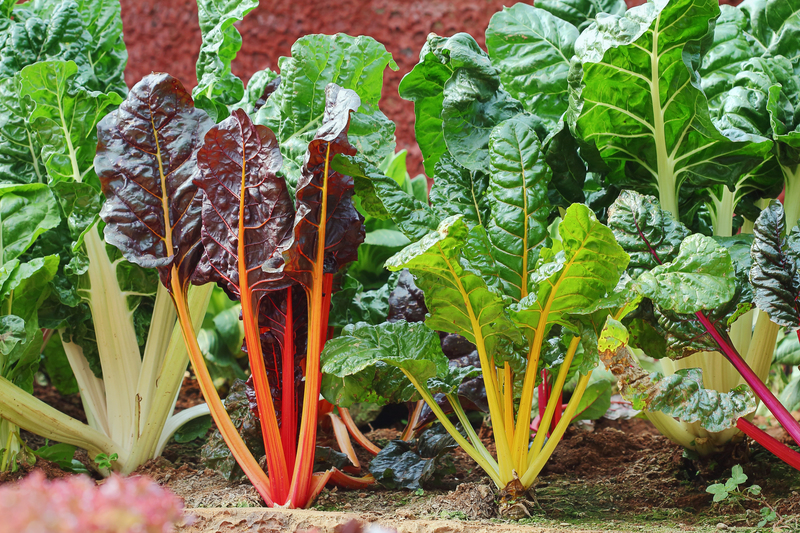Achieve Botanical Elegance with 9 Perfect Ground Covers
Posted on 07/09/2025
Achieve Botanical Elegance with 9 Perfect Ground Covers
If you're dreaming of a lush, inviting, and low-maintenance landscape, incorporating ground covers can be the key to achieving that botanical elegance. With their ability to spread effortlessly across the soil, these plants not only prevent weed growth but also provide a spectacular tapestry of colors and textures. Whether you're looking to enhance your garden's aesthetic appeal or improve its ecological health, ground covers offer a multitude of benefits. Here are nine perfect choices to transform your outdoor space.
1. Creeping Thyme (Thymus serpyllum)
Creeping thyme is a fragrant, hardy plant that thrives in a variety of conditions. It sprouts tiny, aromatic leaves and vibrant purple or pink flowers. Ideal for rock gardens and pathway edges, this ground cover requires minimal maintenance and is drought-resistant. Its evergreen foliage provides a year-round carpet of green.
2. Periwinkle (Vinca minor)
Periwinkle is a versatile, fast-growing ground cover that features glossy leaves and charming blue or white flowers. It's an excellent choice for shady areas where other plants might struggle. The dense foliage helps in soil erosion control, while its beautiful blooms bring life to otherwise dull spots.
3. Sweet Woodruff (Galium odoratum)
Known for its sweet, hay-like fragrance, sweet woodruff offers an enchanting touch to gardens. Its delicate white flowers adorn the landscape in spring, while the soft whorls of leaves provide a lovely green carpet. Perfect for shaded garden beds, it flourishes easily with little attention.
4. Irish Moss (Sagina subulata)
Not actually a moss but a low-growing perennial, Irish moss spreads beautifully across gardens, offering a vibrant emerald green hue. Ideal for filling in cracks between stones or walkways, it bears tiny white flowers in late spring to early summer. Its soft, cushion-like texture adds a tactile dimension to any garden.
5. Deadnettle (Lamium maculatum)
The striking foliage of deadnettle, with its silver-tinged leaves and purple, pink, or white blooms, makes it a standout choice. This hardy ground cover excels in partial to full shade, offering excellent weed suppression. Its fast-growing nature ensures quick coverage for bare spots.
6. Lilyturf (Liriope muscari)
Lilyturf is an excellent choice for creating structured borders or filling large spaces. It features grass-like leaves and spikes of purple or white flowers, which add a unique texture. Suitable for a variety of soil types, it is both drought-tolerant and resilient to foot traffic.
7. Pachysandra (Pachysandra terminalis)
A stalwart of shade gardens, pachysandra is appreciated for its glossy leaves and small white flowers. This ground cover performs well in dry or moist conditions, maintaining its vigor through diverse climates. It's an especially great choice for areas that need soil conservation.
8. Ajuga (Ajuga reptans)
For those seeking a splash of color, ajuga is an excellent selection. Its foliage ranges from purple to bronze, and it blooms with vibrant blue flower spikes. Known for its speed of growth, ajuga is perfect for quickly beautifying spots needing cover and tying together different sections of your garden.
9. Bearberry (Arctostaphylos uva-ursi)
Bearberry is a resilient evergreen ground cover, perfect for dry, sandy soils. Its small, leathery leaves and bright red berries, which attract wildlife, can add year-round interest to your landscape. This plant is a strong choice for erosion control on slopes or difficult-to-reach areas.


The Benefits of Choosing Ground Covers
Incorporating ground covers into your landscape offers numerous advantages:
- Weed Management: Ground covers form a dense mat of foliage, effectively competing with weeds for light and nutrients.
- Soil Conservation: These plants stabilize the soil, preventing erosion and retaining moisture.
- Low Maintenance: Once established, many ground covers require minimal care, reducing overall garden maintenance efforts.
- Ecological Benefits: Ground covers provide habitat for beneficial insects and wildlife, supporting local biodiversity.
- Aesthetic Appeal: With a variety of colors, textures, and forms, they add a beautiful, cohesive design element to any garden.
Tips for Successfully Planting Ground Covers
- Evaluate Your Space: Consider the light levels, soil type, and climate before selecting the appropriate ground cover.
- Prepare the Soil: Enrich the soil with organic matter to ensure it provides the necessary nutrients for your plants to thrive.
- Plant at the Right Time: The best times to plant ground covers are typically spring or fall, offering optimal growing conditions.
- Space Appropriately: Consult planting guides to determine the ideal spacing for the specific ground cover species.
- Water Wisely: Establish a watering regime that suits the needs of your chosen plants, ensuring they are neither overwatered nor underwatered.
Transform your garden into a serene haven with the elegance ground covers provide. Whether you're seeking to enrich botanical beauty or create an eco-friendly landscape, these plants offer a practical, attractive solution. Choose the right varieties for your garden, and enjoy nature's stunning tapestry in your own backyard.



